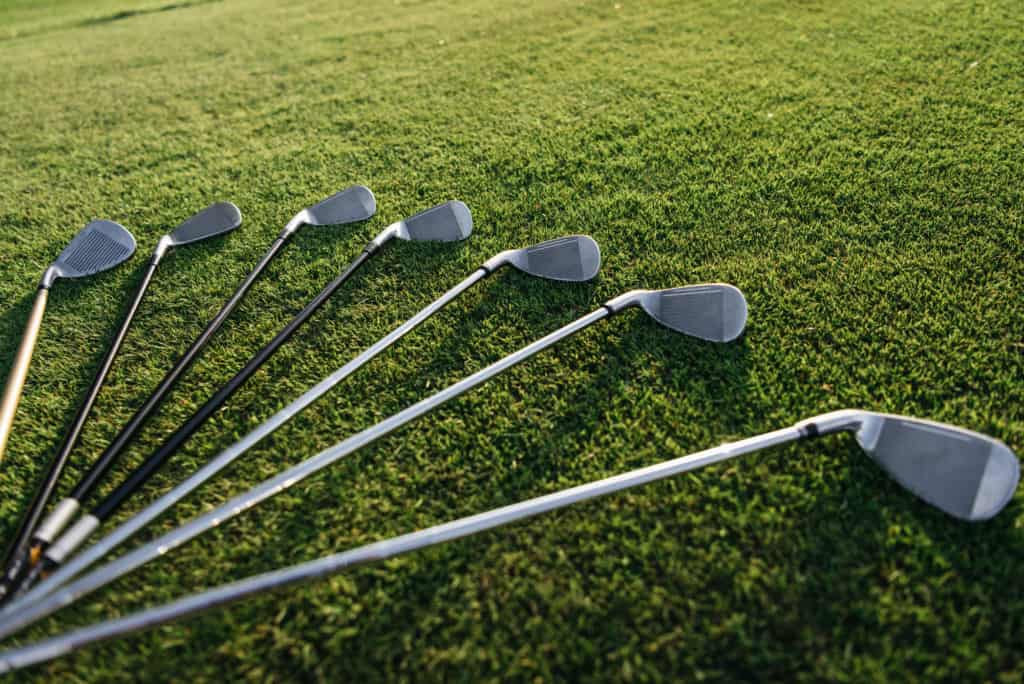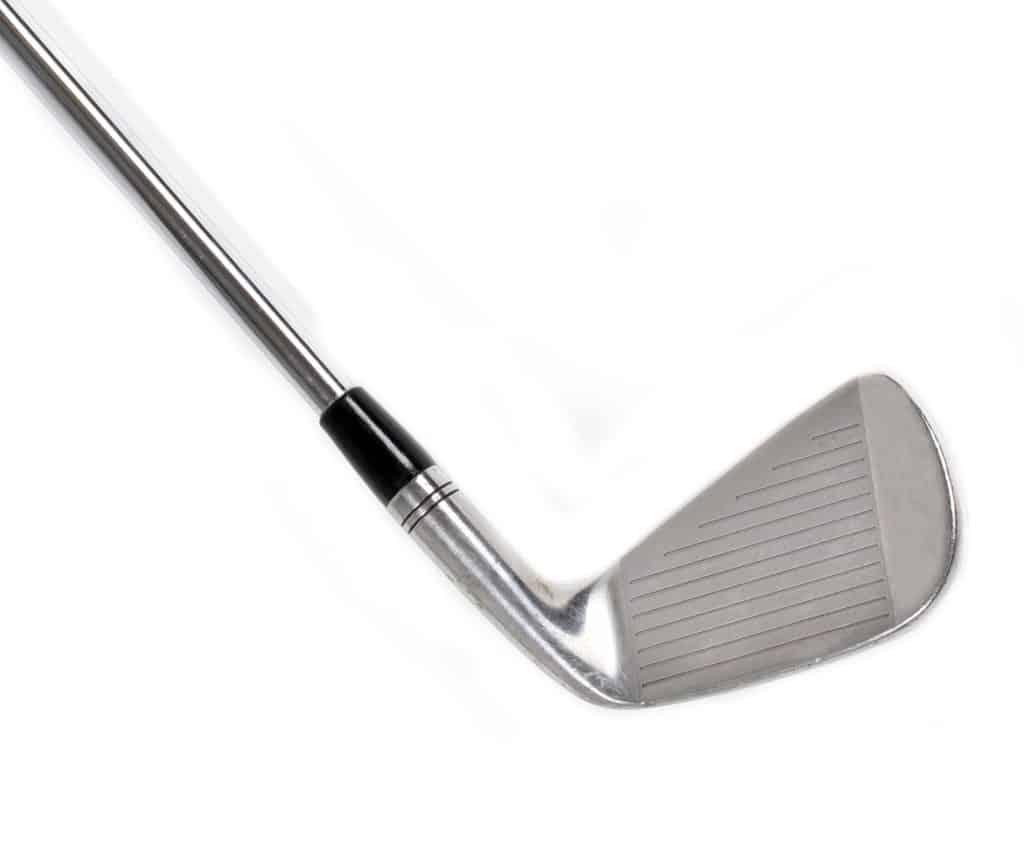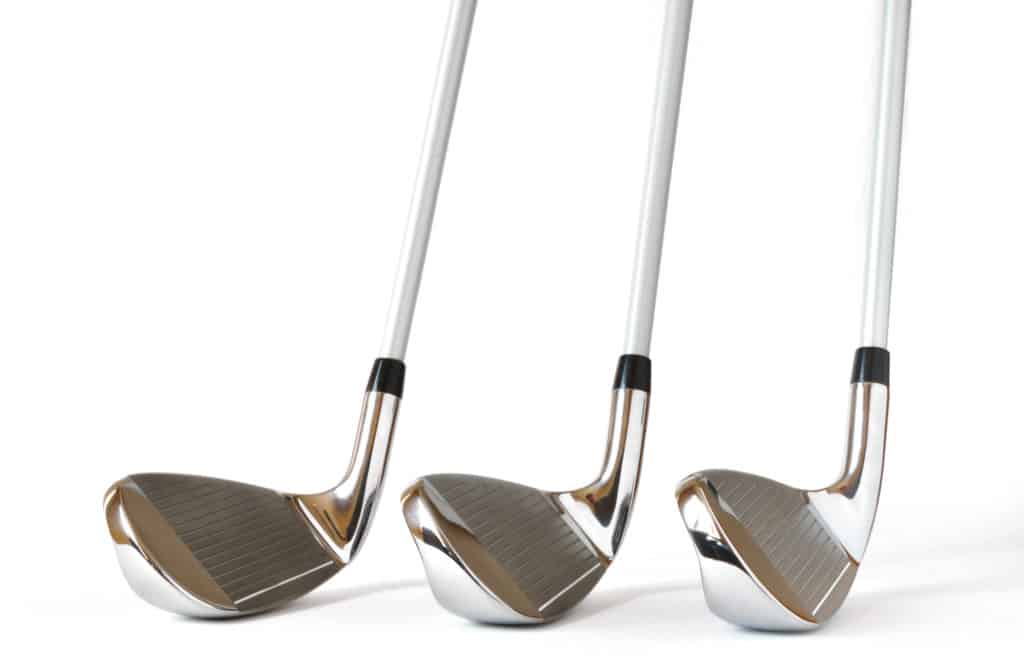
Golfers should carry more than one wedge in their golf bag.
Knowing which wedges to carry and which wedge to hit in certain circumstances can get a bit tricky.
Luckily, we have put together some information to understand the difference between an approach and a lob wedge.
Whether you carry these wedges in your bag currently or are thinking about adding them soon, we have some information to help guide you in your decision.
Approach Wedge Vs. Lob Wedge

An approach wedge is a golf club that will fit between your pitching wedge and your sand wedge.
The approach wedge will typically have between 50 and 54 degrees of loft.
The lob wedge is a club with more loft than your sand wedge.
Traditionally, a lob wedge will be anywhere from 58 to 64 degrees of loft.
An approach wedge and a lob wedge can be used for many different types of shots around the golf course.
Most golfers know about the pitching wedge and sand wedge, but some do not understand how an approach wedge and a lob wedge could help improve their game.
We will break down everything you need to know about the approach wedge and the lob wedge in our guide.
Approach Wedge: Everything You Need to Know

An approach wedge is sometimes called a gap wedge.
It is called a gap wedge because it fills the gap between the pitching wedge and the sand wedge.
Some companies will call the approach wedge the utility wedge.
Although there are different names for the club, they all will have about the same loft.
The loft will be anywhere from 50 to 54 degrees.
For many years, the approach wedge was not all that popular for players to have.
Pitching wedges were made with 46–48 degrees of loft, and golfers were comfortable with the gap between the pitching wedge and the sand wedge.
As time has progressed and pitching wedges have gotten stronger, the gap between the sand and pitching wedge kept getting larger.
Today, many pitching wedges are 42–44 degrees.
Certainly, the stretch from 42 to 56 is a large gap, leaving room for another golf club: the approach wedge.
Many people find that their approach wedge ends up being the 100-yard golf club.
This distance to the green is a very common landing spot, therefore the wedge got its name as the approach wedge.
There are a few ways to use your approach shot on the golf course.
For longer pitches and chips, the approach wedge can help golfers get the ball to the hole without taking a massive swing.
Usually, the ball will fly at a medium height and then roll out a few feet to the pin.
The approach wedge also comes in handy on longer bunker shots.
Sometimes the sand wedge is just not enough if your bunker shot is thirty yards away.
The approach is an excellent choice because it has a great mix of height and distance as well.
With an approach wedge, you can decide if you want the club to match your iron set or if you’re going to get a separate wedge which matches your sand and lob.
Whichever way you decide to go with the approach wedge is fine, but there are a few things to consider.
If you are going to be using your approach wedge for lots of full swing shots, then it may be best to get a wedge that matches your irons.
If you think you will use the approach wedge mostly around the greens, then choose one with more spin and performance that matches your sand or lob wedge.
With the way golf technology is currently, it’s challenging for players to go without an approach wedge in their bag.
The approach wedge will fill that large gap between the pitching wedge and the sand wedge and leave golfers with more options to make great shots.
Lob Wedge: Everything You Need To Know

A lob wedge is going to be the highest-lofted club in your golf bag.
A lob wedge is used for the shots that need to get up high and down quickly.
There will be lots of spin on your lob wedge, and the ball should stop almost where it lands.
This makes the lob wedge an excellent club for short shots around the green, mostly out of the rough.
Since the lob wedge has so much loft and lots of spin, you should be able to get it to stop even when you are hitting shots out of the rough.
Lob wedges get a terrible reputation of being very difficult to hit.
This is not the case, but they do need to be used properly.
The lob wedge is also becoming a very popular club to use out of the bunker.
When you have a large lip on a sand trap, the lob wedge will help you get out and over the lip without much trouble.
Some golfers who have struggled to get a sand wedge out of a bunker for years are doing much better after they’ve switched to a lob wedge.
Great golfers are creative with the shots they hit around the green, and that is why they want a variety of clubs in their bag.
Having four wedges is going to help you perform out of several different lies.
Some golf manufacturers make lob wedges that match with the iron sets, but most lob wedges will be blade or cavity back style wedges sold separately.
A true lob wedge does not need to match the rest of your irons.
Lob wedges can be used for full-swing approach shots into a green, but they don’t need to be.
There is no reason you should feel like the lob wedge is a perfect approach shot to the green.
Chances of blading or chunking that club are higher than they are with hitting an approach or a sand wedge and just taking a little bit off of the distance.
The lob wedge should be your friend when you are close to the green.
When you don’t have much green to work with, and you have short-sided yourself, the lob wedge is a great club.
It may take golfers a little while to get used to how to hit a lob wedge and how to get it to spin, but once you do, the possibilities with this club in the bag are endless.
What is the difference between a lob wedge and an approach wedge?

The lob wedge and the approach wedge have different lofts.
An approach wedge is designed to have more of a penetrating ball flight and then roll for a few yards when it hits the ground.
The lob wedge is designed to fly very high and stop almost immediately upon landing on the ground.
The lob wedge and the approach wedge can be built and designed the same way as far as aesthetics, technology, and feel, but the lofts will change.
The bounce between a lob wedge and an approach can also be different.
Traditionally, the approach wedge will have less bounce than the lob wedge, but these clubs can be ordered in various ways.
How far should you hit an approach wedge?

How har you hit the approach wedge will depend on how fast your swing speed is and the type of golf wedge you have.
Most golfers report getting around 100 yards of distance with their approach wedge.
This is why the approach becomes such a popular club for golfers.
The 100-yard mark seems to be a popular place for your approach shots to be landing, especially on a par five hole where you have taken your drive and your second shot.
Choose an approach wedge you feel comfortable taking full swings with because you will probably be using them.
How far should you hit a lob wedge?

A lob wedge is a club you won’t want to worry about when it comes to distance.
Many golfers can hit a lob wedge 50 yards, and others will hit it 80 yards.
Regardless of how far you hit your lob wedge, it would help if you were more interested in how well you hit your lob wedge around the greens.
Hitting shots that spin back or get up and down is way more important than how far you can hit this club.
Think of the lob wedge more as a tool than a club you will use to get the distance.
Distance is not going to be the most crucial factor with this club in your hand.
What three wedges should I carry?

At a minimum, golfers should carry a pitching wedge, a sand wedge, and a lob wedge.
These three wedges will help you hit approach shots into the green and allow for shots around the green.
Depending on the iron set you have and the distance between the pitching wedge and the sand wedge, you may also want to carry an approach wedge.
For many years, golfers carried more and more hybrids and fairway woods.
More modern lower-scoring players realize that having a selection of wedges to choose from is much more critical than a selection of fairway woods.
When you miss a green, you could be in the rough, in the bunker, on short grass, medium grass, wet grass, or hardpan.
With all of these different lies combined with tons of different pin placements, it can be hard to get up and down.
Having lots of choices when it comes to clubs, bounce, feel, etc. is only going to help you learn to score.
If you look at the professional golfers on the PGA Tour, they will have a lot of wedges in their golf bag.
For players who have been carrying just a pitching wedge and sand wedge, start by adding in a lob wedge and then go from there.
The lob wedge should open up some opportunities to hit shots you have not been able to do in the past with your sand or pitching wedge.
Conclusion
Now that you know the difference between the lob wedge and the approach wedge, you have to decide which wedges make sense for your game.
Most of the time, you are carrying some golf clubs you never use when you could easily replace them with a wedge.
The best place to look is the three and four iron and if you are carrying too many fairway woods.
Many golfers are okay with one fairway wood and an extra wedge.
Think about where your real weaknesses are in your game and what you can do to improve them.
Be realistic about what clubs truly merit a spot in your golf bag.



Leave a Reply